C.P. Company, established in 1971 by Massimo Osti in Bologna, originally launched as Chester Perry before rebranding in 1978. The brand distinguished itself in the fashion industry with its pioneering garment-dyeing techniques, notably introducing synthetic fabric dyeing in 1981, which revolutionized the way colors were applied to textiles. Among its iconic products is the Mille Miglia jacket, celebrated for its integrated goggles, which became a cultural touchstone. Over the years, C.P. Company has changed hands multiple times, adapting to shifts in focus while remaining relevant through strategic collaborations. Today, the brand beautifully blends its rich heritage with contemporary sustainability initiatives, ensuring its legacy not only endures but also actively influences modern design narratives. Exploring its evolution uncovers even more intricate details of its remarkable history.
Brand Origins and Evolution
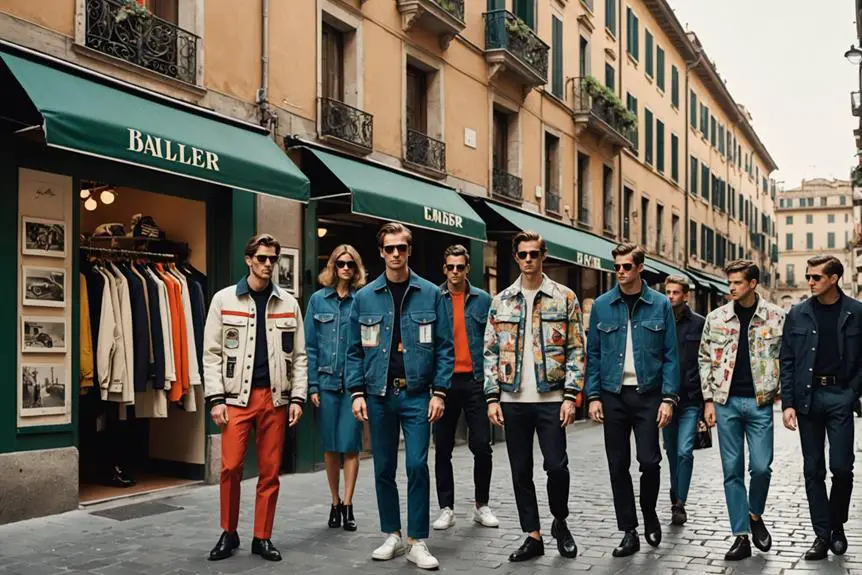
C.P. Company emerged in 1971, founded by Massimo Osti in Bologna, Italy. Initially named Chester Perry, the brand rebranded in 1978 due to trademark complications. This shift set the stage for C.P. Company to become a trailblazer in sportswear design. Massimo Osti's innovative techniques—like fabric experimentation and functional aesthetics—earned him the title of the "godfather of sportswear."
In 1984, Osti sold shares to GFT but continued as the designer until 1994. His departure marked a pivotal point, leading to various ownership changes, including Carlo Rivetti's acquisition in 1993. By 2010, the brand fell under Enzo Fusco's FGF Industry S.P.A., and in 2015, Hong Kong's Tristate Holdings Limited acquired its intellectual property.
The brand's evolution continued into 2019 when Lorenzo Osti, Massimo's son, became president. This appointment heralded a revitalization, showcased by the opening of a flagship store in Milan. C.P. Company's journey reflects a blend of innovation, resilience, and adaptation, ensuring that Massimo Osti's legacy thrives in the contemporary fashion landscape.
Key Milestones in History
The journey of C.P. Company began in 1971 when Massimo Osti founded the brand in Bologna, Italy, initially under the name Chester Perry. This name changed in 1978 due to trademark issues, marking the first significant milestone in its history. In 1984, Osti sold shares to GFT, yet he remained the creative force until 1994, a shift that set the stage for future developments. The brand underwent a notable rebranding in 1993 when Carlo Rivetti acquired it, renaming it Sportswear Company, thereby shifting its strategic focus.
A pivotal moment came in 2010 when Enzo Fusco's FGF Industry S.P.A. acquired C.P. Company, and in 2012, Alessandro Pungetti returned as creative director, injecting new life into the brand's aesthetic. This revitalization was essential as C.P. Company approached its 50th anniversary in 2021. Celebrating this milestone, the brand collaborated with industry giants like adidas Spezial and Patta, reinforcing its lasting influence in the fashion world. Each of these milestones reflects C.P. Company's evolution, showcasing resilience and adaptability within an ever-changing industry landscape.
Innovative Garment Dyeing Techniques

Innovative garment dyeing techniques have been a cornerstone of C.P. Company since its inception in 1973. This pioneering approach transformed how color integrates with fabric, enhancing texture and depth in ways previously unimagined. You might appreciate the significance of these advancements:
- 1973 Introduction: The innovative garment dyeing process began, setting a new benchmark in textile color application.
- 1981 Milestone: C.P. became the first to garment-dye synthetic fabrics, offering a richer color palette and distinct aging effects.
- Advanced Lab: Established in Ravarino, Italy, the dyeing lab focuses on cutting-edge methods, including dual-color effects for mixed-fiber garments.
- Whole Garment Dyeing: Launched in 1974, Tinto in capo emphasized individuality in finished garments, allowing each piece to tell its own story.
Through these innovative garment dyeing techniques, C.P. Company has consistently pushed the boundaries of textile technology. Their commitment to creating garment-dyed pieces has resulted in hallmark items, such as the celebrated garment-dyed Gore-Tex, merging functionality with high fashion. This dedication not only defines the brand but also reshapes the landscape of contemporary fashion.
Iconic Designs and Products
Building on its groundbreaking dyeing techniques, C.P. Company has established a legacy of iconic designs that blend functionality with style. One standout piece is the Mille Miglia jacket, introduced in 1988. This jacket not only boasts integrated goggles but also features a sleeve window for watch visibility, drawing inspiration from the legendary Mille Miglia endurance race.
In 2009, designer Aitor Throup reimagined this classic for its 20th anniversary, showcasing C.P. Company's commitment to innovation and design excellence. Further emphasizing this dedication, the Continuative Garments range, launched in 1991, reissues variations of iconic designs each season, ensuring their timeless appeal remains relevant.
Additionally, C.P. Company's unique collections, such as the Advanced Apparel Concepts (A.A.C.) and Bi-Tonal Material (Bi-TM) series, illustrate their focus on technical and functional design.
Here's a quick look at some of C.P. Company's iconic products:
| Product Name | Year Introduced | Key Feature |
|---|---|---|
| Mille Miglia Jacket | 1988 | Integrated goggles |
| 20th Anniversary Jacket | 2009 | Designed by Aitor Throup |
| Continuative Garments | 1991 | Seasonal variations of classics |
Cultural Impact and Influence
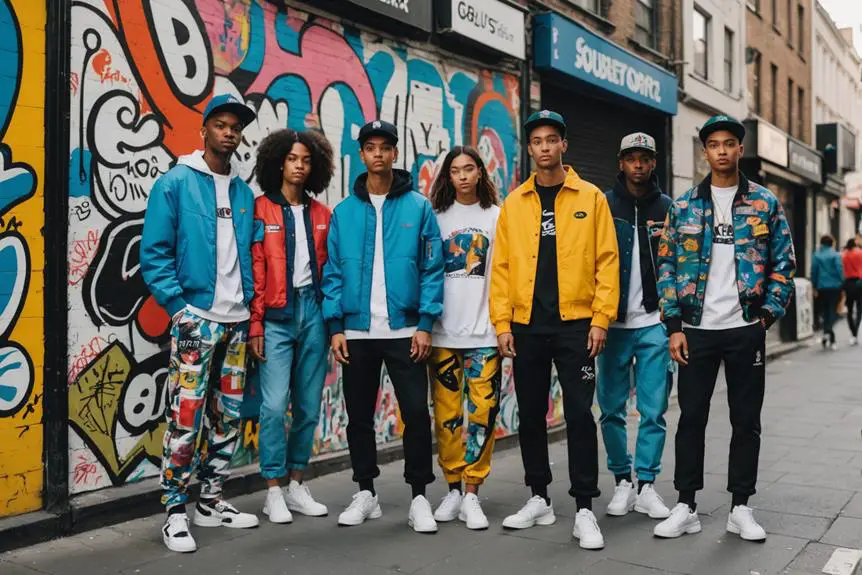
C.P. Company has profoundly shaped cultural landscapes, particularly in the context of street style and casual subculture that emerged in late 1970s UK. As you explore their influence, consider these key aspects:
- Symbol of Identity: The Mille Miglia goggle jacket became a staple, allowing wearers to blend in while evading surveillance, thereby becoming a symbol of resistance.
- Cultural Icon: By the late 1990s, the Mille Miglia jacket solidified its status as a cultural icon, referenced in various branding and artworks, including the notable 2022 "Art of the Terraces" exhibition.
- Intersection with Football: C.P. Company's designs often reflect the intersection of fashion and football culture, making it a frequent topic in youth culture discussions.
- Musical Collaborations: Collaborations with influential musicians like Damon Albarn and Liam Gallagher highlight the brand's resonance, as these artists regularly incorporate C.P. aesthetics into their public identities.
Through these elements, C.P. Company not only defines a style but also acts as a cultural marker, demonstrating how fashion can influence and reflect societal dynamics.
Collaborations and Partnerships
Collaborations in the fashion world often serve as a bridge between diverse creative domains, and C.P. Company exemplifies this dynamic through its strategic partnerships. Celebrating its 50th anniversary in 2021, C.P. engaged with brands like Patta, Adidas Spezial, Barbour, and Clarks Originals, showcasing the brand's commitment to innovation and community.
In 2023, C.P. launched a capsule collection with Palace, reinterpreting classic garments from its rich archive, demonstrating how nostalgia can be revitalized for contemporary audiences. The brand has also collaborated with musicians, including Kano and Gorillaz, producing unique capsule collections that fuse their artistic visions with C.P.'s iconic designs. Significantly, designer Aitor Throup's reworks of the goggle jacket and Mille Miglia jacket illustrate how collaborations can breathe new life into established styles.
Additionally, the collaboration with Junya Watanabe MAN reflects a seamless blend of historical and contemporary design principles, encapsulating narratives rooted in British punk influences while maintaining practical style. Each partnership not only celebrates C.P.'s legacy but also expands its creative horizons, reinforcing the brand's relevance in an ever-evolving fashion landscape.
Market Position and Recognition
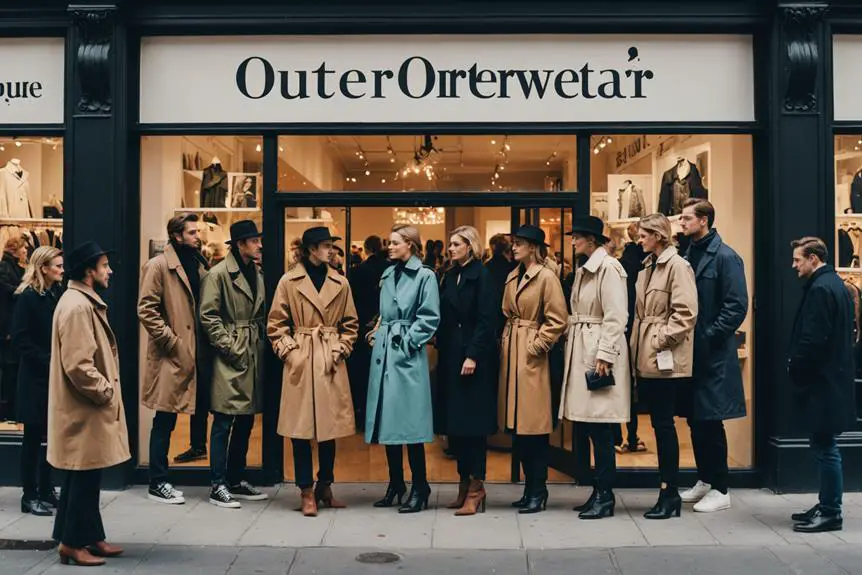
Renowned for its innovative approach to functional outerwear, C.P. Company stands as a leading Italian brand that has carved a unique niche in the fashion industry. Under the visionary guidance of designer Massimo Osti, the brand's commitment to quality and innovative design has garnered a dedicated following among fashion enthusiasts and collectors alike. Here are four key aspects that highlight its market position and recognition:
- Premium Pricing: C.P. Company's unique craftsmanship often commands premium pricing, reflecting its heritage and demand.
- Technical Innovation: The brand is celebrated for pioneering technical materials and garment-dyeing techniques, setting a new standard in fashion.
- Cultural Influence: Rooted in military and utilitarian styles, C.P. Company has notably influenced casual fashion and British football terrace culture.
- Legacy and Collaborations: Ongoing collaborations with notable brands and artists underscore the brand's legacy and relevance in contemporary fashion.
These factors not only solidify C.P. Company's market position but also highlight its ability to adapt while maintaining a distinctive identity, ensuring its recognition in the competitive fashion landscape.
Sustainability Initiatives and Challenges
In the ever-evolving landscape of fashion, sustainability has become a focal point for brands looking to maintain their relevance and integrity. C.P. Company is making strides with its sustainability initiatives, particularly through its innovative nettle seed-based fabric introduced in the Spring/Summer 2023 collection. This move reflects a commitment to scalable textiles while also addressing greenwashing practices rampant in the industry. By being cautious about reissuing archival pieces, the brand critiques superficial sustainability efforts.
To further emphasize its dedication, C.P. Company is shifting nettle production to Italy, aligning with consumer demand for local sourcing. This decision not only supports sustainability but also resonates with the brand's heritage. However, challenges remain as the fashion sector grapples with the need for industrial-scale solutions.
Here's a summary of C.P. Company's sustainability initiatives and challenges:
| Initiative | Challenge |
|---|---|
| Nettle seed-based fabric | Combatting greenwashing |
| Local sourcing in Italy | Balancing heritage and modernity |
| Innovative textile solutions | Achieving industrial scalability |
| Cautious archival reissues | Maintaining consumer trust |
| Commitment to sustainable practices | Adapting to market demands |
C.P. Company's journey exemplifies the complexities of sustainability in fashion.
Digital Archiving and Engagement
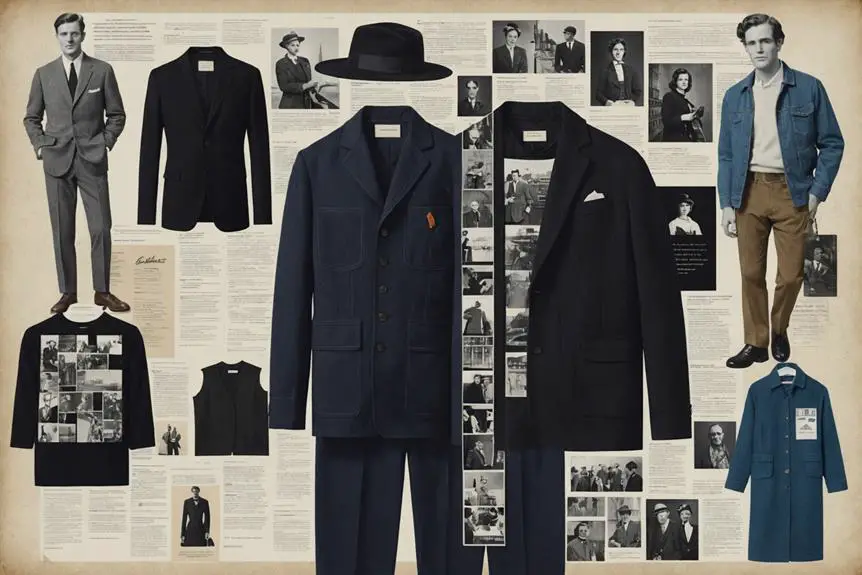
Celebrating its rich heritage through digital archiving, C.P. Company launched an impressive online platform that highlights five decades of Italian sportswear history. This digital archive not only showcases garments, sketches, and editorials but also serves as a permanent exhibition dedicated to the brand's innovative designs and cultural significance. By engaging with the archive, you can explore key moments from C.P. Company's origins and their lasting impact on contemporary fashion, such as the brand's evolution similar to that of identifying vintage clothing.
Here are four features that enhance your experience:
- User-Friendly Interface: Navigate easily through the extensive collection, whether you're a casual fan or a dedicated researcher.
- Diverse Content: Discover a wide array of materials, from historical garments to influential editorials.
- Cultural Insights: Gain a deeper understanding of how C.P. Company's designs shaped the fashion landscape.
- Interactive Engagement: Participate in discussions and share your insights, connecting with a new generation of enthusiasts.
C.P. Company's commitment to digital archiving exemplifies its dedication to preserving its legacy while fostering engagement with contemporary audiences. This initiative not only honors the past but also invites you to become part of the brand's ongoing narrative.
Legacy and Future Vision
C.P. Company celebrates a legacy that's deeply rooted in innovative garment development, having been founded over 50 years ago. You can see how the brand's historical ties to Italian sportswear and military aesthetics still inform its designs today, even as it adapts to contemporary consumer expectations. This adaptability is essential for maintaining relevance in a fast-paced fashion landscape.
As you explore C.P. Company's future vision, you'll notice a strong commitment to sustainability. The introduction of eco-friendly textiles, like nettle seed-based fabric, demonstrates their dedication to ethical production practices. This focus not only honors the brand's heritage but also aligns with the growing demand for responsible fashion.
Additionally, the establishment of a digital archive showcases C.P. Company's efforts to preserve its rich history while engaging with future generations. This online exhibition serves as a bridge between the past and the future, celebrating key milestones and inspiring new designers.
In balancing its revered legacy with a progressive outlook, C.P. Company guarantees it remains a significant player in the evolving fashion industry, paving the way for innovation while honoring its storied origins.
Frequently Asked Questions
What Is the History of CP All?
To understand C.P. Company's history, you'll explore its innovative garment dyeing techniques, iconic designs blending functionality and style, and significant cultural impact on streetwear since the 1970s, shaping fashion trends and identities worldwide.
What Does CP Stand for in C.P. Company?
C.P. in C.P. Company originally stood for "Chester Perry," reflecting its founder's vision. Despite legal challenges prompting a name change, the brand's identity remains tied to its innovative approach to functional sportswear and design.
Are CP and Stone Island the Same Company?
No, C.P. Company and Stone Island aren't the same. They share a creator and similar design philosophies, but they operate as distinct brands, each with unique identities and product offerings in the fashion market.
Who Is the CEO of C.P. Company?
You'll find that Lorenzo Osti currently serves as the CEO of C.P. Company. His leadership emphasizes innovation and sustainability, ensuring the brand maintains its cultural relevance while honoring its rich heritage in fashion.
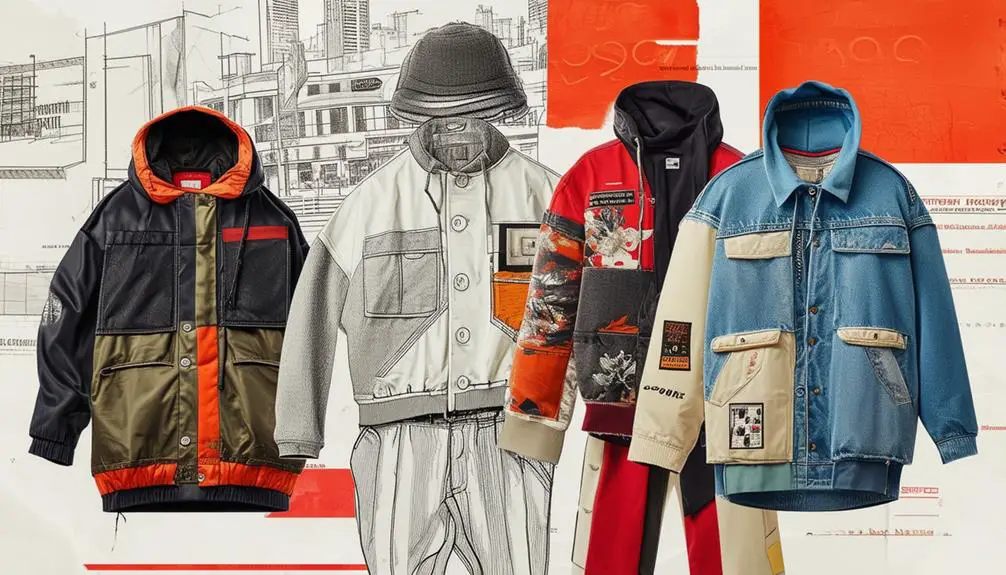




Thanks for sharing. I read many of your blog posts, cool, your blog is very good.
Your article helped me a lot, is there any more related content? Thanks!
Thanks for sharing. I read many of your blog posts, cool, your blog is very good.
Your point of view caught my eye and was very interesting. Thanks. I have a question for you.